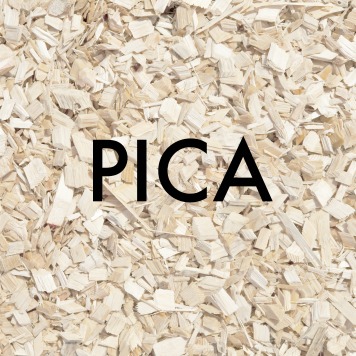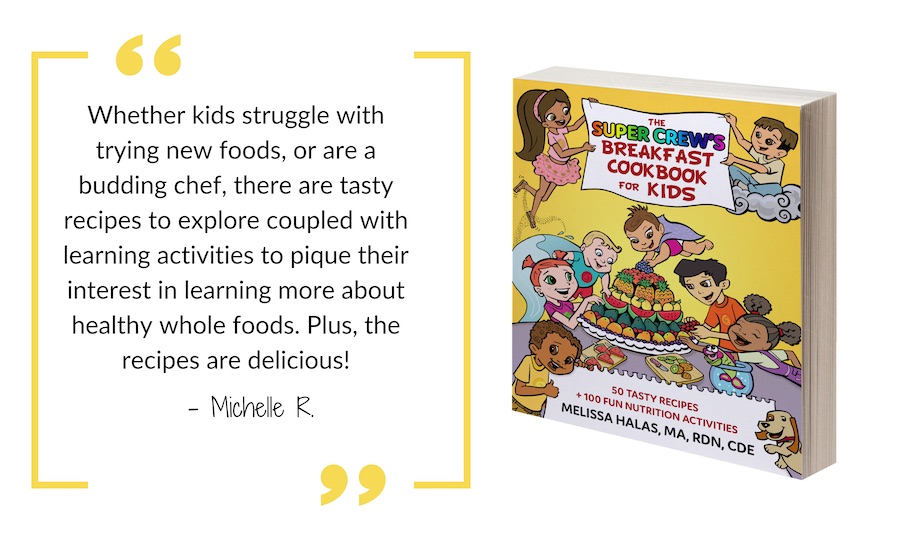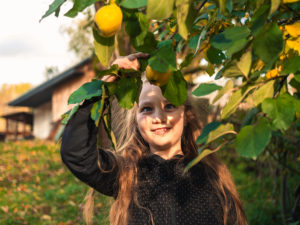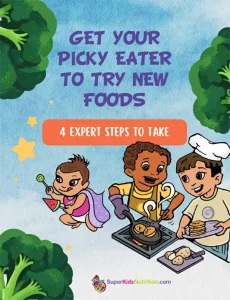
Concerned about your toddler eating paper or cardboard? It could be Pica. Pica in kids and toddlers has many nuances. Here is what you need to know.
I knew something was wrong when my two-year-old began eating paper. She wasn’t just mouthing books, she was actually chewing and swallowing the paper. I first searched for solutions on how to stop my child from eating paper from her doctor.
Unfortunately, they first brushed it off as a phase, but then she started eating it to the point of throwing up. She even began eating lotion too. Finally, a few weeks before her third birthday, her doctor agreed something was wrong.
My daughter had Pica.
What is Pica? And what are Pica symptoms?
It’s not uncommon for infants and toddlers to explore their world with their mouths. Babies will often find things to chew on when growing new teeth.
Pica, however, is a mental disorder that goes beyond normal and healthy developmental behaviors. It is characterized by the craving to eat or mouth non-nutritive substances for at least one month, beginning when children are around 18- 24 months.
It is common for children with mental difficulties to display Pica behavior. Children can have Pica with almost anything, including dirt, hair, ice, paper, paint chips, chalk, and wood. (1) (2)

What causes Pica in kids?
There are several theories on why toddlers and preschoolers develop Pica. Hunger, nutrient deficiency, defense against harmful toxins, obsessive-compulsive disorder (OCD), and soothing emotional stress have all been linked to Pica. (1)
Nutrition concerns with a Pica diagnosis
Being concerned about your toddler eating paper, cardboard, or other non-food items is entirely reasonable, as our bodies are not meant to digest them. Non-food items will usually pass through the digestive system without harm.
However, sometimes they can create a blockage in the intestines and cause an obstruction. Consistent consumption of these items can also lead to several nutritional deficiencies. (3) After a Pica diagnosis, your doctor should order blood work to test for nutrient deficiencies such as iron and zinc.
Pica Disorder Iron Deficiency
Non-food items can bind to the inner layer of intestines which can prevent absorption of important micronutrients, such as Iron. Decreased Iron intake can decrease the production of Hemoglobin and Hematocrit, two substances that are crucial in preventing Iron Deficiency Anemia. (3)
Although it is a common belief that pica in kids is caused by a nutritional deficiency, researchers haven’t been able to prove it so far. Some studies suggested that iron and zinc supplementation might help reduce pica behaviors, but there is still a lot of research to be done on this topic. (3)
Whether or not pica can be improved by eating more iron-rich foods, including iron in your child’s diet can help them grow healthy and strong! Here’s more about iron needs and iron foods for kids.
Pica Disorder Zinc Deficiency
Both Iron and Zinc deficiency in Pica children is common due to the regular consumption of non-food items displacing nutrients from real foods. (3) Zinc deficiency is particularly associated with decreased Immune system function (4), so it is important to get Pica symptoms under control as soon as possible to ensure your toddler does not develop multiple conditions.
You should also ask to have your child screened for lead poisoning, infections, and other toxins, especially in children who have a pica for paint chips, dirt, clay, or feces. (1) Additional tests and exams may be needed to check for obstructions. My daughter had an x-ray to make sure she had not swallowed any staples or paperclips because she had Pica for paper.
How to stop your toddler from eating paper or cardboard
If your child has pica with a nutrient deficiency, treating that deficiency should be your first goal. Doing so may help lessen pica behaviors and will certainly improve your child’s health! If your child doesn’t have nutrient deficiencies, other action is necessary.
Redirecting pica behaviors and encouraging less harmful alternatives is one research-based strategy. (6) Several behavior-based Pica syndrome treatments can help distract an episode.
Foods to replace Pica craving
Ask your child if they are hungry or rather just bored. If they are hungry, let them help prepare a healthy snack with a similar texture to their Pica craving.
- For a paper craving, try cooked pasta or thin flat bread;
- For wood, try crunchy vegetables;
- For paint chips, try sweet fresh fruit or dried fruit; and
- For dirt, try cooked peas or goji berries.
If they are bored, find something fun and distracting to do such as reading, a craft, or playing with a long-forgotten toy.
Tune into emotions and distractions
- Help identify the emotion they are experiencing and suggest other ways to cope. For instance, when my daughter was angry, having her hold my hands and jump up and down helped release the negative energy she had. When she was excited, having her draw a picture of what she was looking forward to helped refocus her energy.
- Look for other things to distract them. For children with strong oral needs, finding a substitute might be necessary, such as chewing gum, oral sensory toys, or sipping from a straw.
- Keep a log of your child’s Pica, emotions, and events surrounding cravings. I found this to help identify triggers. This is how I discovered my daughter would exhibit Pica behavior when anxious or excited. Knowing triggers can help prevent an episode. It can also help teach coping skills.
Educate Others about Pica in Kids and Toddlers
Teachers, grandparents, and other caregivers need to know about your child’s pica and treatment. Let them know possible triggers. Explain what they should do during a Pica episode, including ways to prevent or distract from inappropriate eating behaviors. Be sure they have the poison control phone number and know when to call.
Knowing your child’s triggers can ease the uncertainty felt by both you and your child. Having a plan and communicating clearly with other caregivers is the key to success in managing your child’s Pica. Visit our special diets and food allergy section to learn more about the prevention and treatment of nutrition issues.
Test your knowledge about Pica in Kids
- How long must a non-nutritive craving or mouthing last to be considered Pica?
- 1 month or more
- What are two nutrient deficiencies that have been linked to Pica?
- Iron and Zinc
If at any time your child ingests something potentially toxic, contact Poison Control immediately at 1-800-222-1222 or go to your nearest emergency room.
This article was updated in January 2025 from its original publish date in December 2014.










